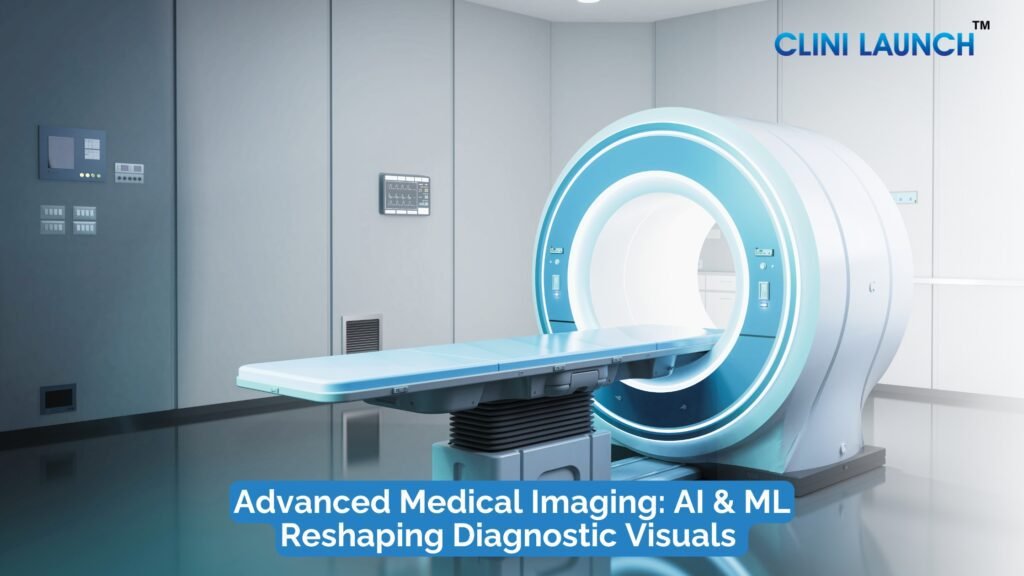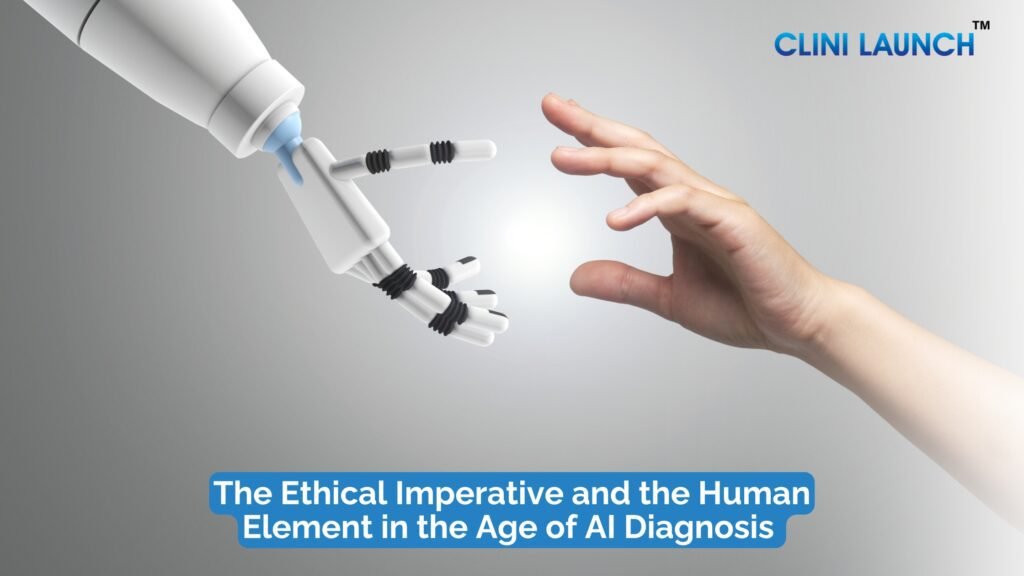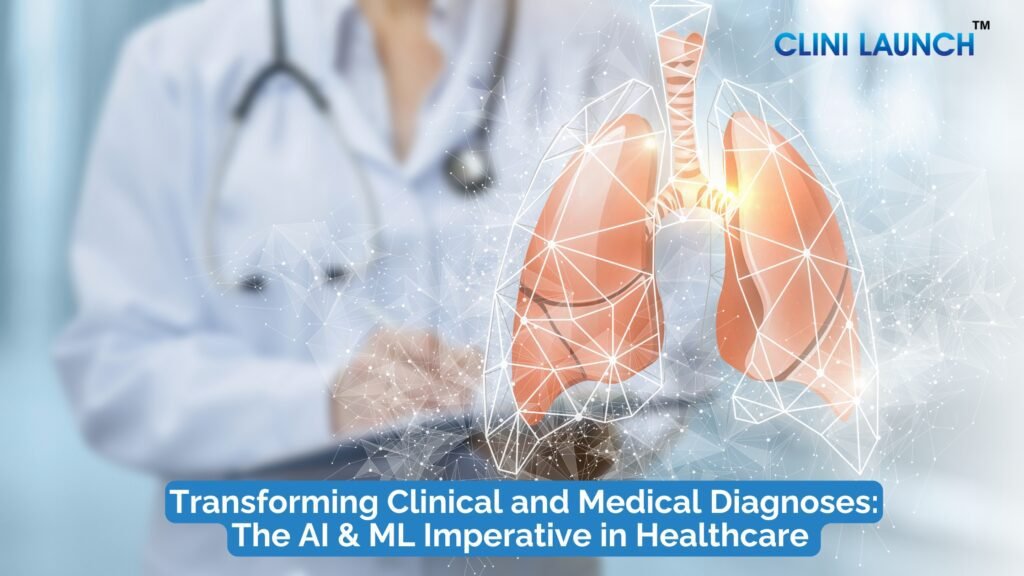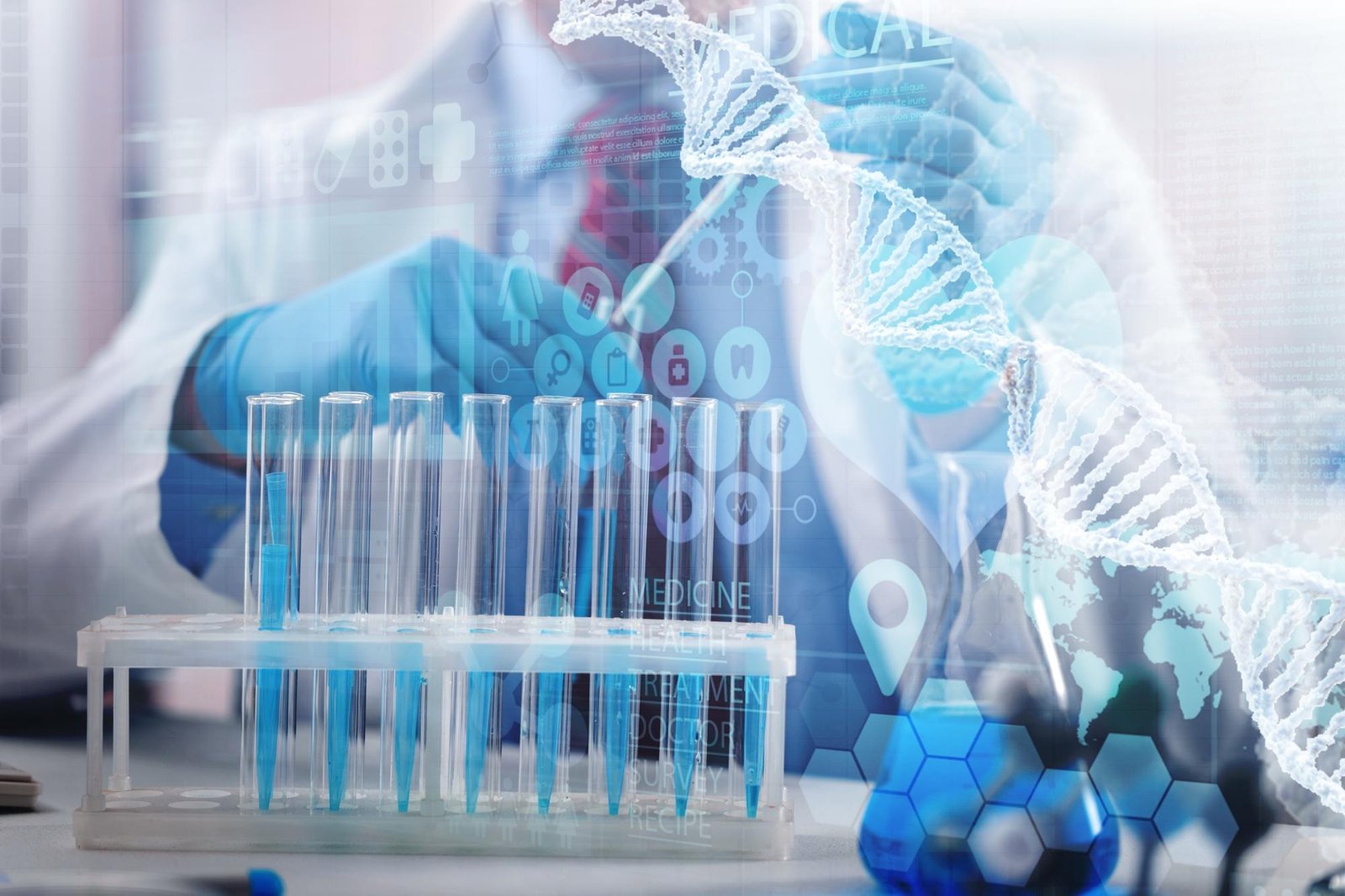The landscape of healthcare is in constant flux, driven by an insatiable quest for greater precision, efficiency, and personalized patient care. At the heart of this evolution lies the diagnostic process – an intricating of observation, deduction, and scientific validation that underpins every medical intervention. For centuries, this process has been a cornerstone of medical practice, relying heavily on the clinician’s acumen, experience, and the limited tools at their disposal.
However, with the advancements in Artificial Intelligence (AI) and Machine Learning (ML), we are witnessing a profound paradigm shift in how we approach clinical and medical diagnoses. These technologies are not merely augmenting human capabilities; they are redefining them, promising a future where diagnoses are faster, more accurate, and accessible to a wider population.
The curriculum of any forward-thinking AI ML Healthcare course today dedicates significant attention to this transformative intersection. Understanding the fundamental principles of clinical and medical diagnoses is paramount, as is grasping how AI and ML can be seamlessly integrated into every facet of this critical journey.
This blog post aims to examine this complex relationship, exploring the traditional pillars of diagnosis and illuminating how intelligent algorithms are now acting as powerful co-pilots in the pursuit of definitive health insights.
Enroll Now: AI and ML in Healthcare course
Patient History & Clinical Interview: The Foundation of Medical Diagnosis

At its core, the diagnostic process is about solving complex puzzles. It begins with the patient’s story – a symphony of symptoms, medical history, lifestyle factors, and environmental exposures. This initial information, gathered through meticulous history-taking, forms the bedrock upon which all subsequent diagnostic endeavors are built. A skilled clinician listens intently, sifting through the narrative for clues, connecting seemingly disparate pieces of information, and formulating initial hypotheses.
Following history, a thorough physical examination provides objective data – vital signs, organ palpation, neurological assessments, and a myriad of other physical indicators that can corroborate or debunk the initial hypotheses. This iterative process of gathering and hypothesis refinement is crucial. It is here, at this foundational stage, where the human element of empathy and communication is irreplaceable. While AI can analyze vast amounts of textual data from electronic health records, it cannot yet replicate the nuanced understanding that comes from a direct, empathetic human interaction.
However, even at this early stage, AI can play a supportive role. Natural Language Processing (NLP) models can assist in structuring and analyzing patient narratives, identifying key symptoms and potential related conditions that might be overlooked. They can highlight patterns in historical patient data that correlate with specific conditions, offering a valuable “second opinion” to the clinician. This is not about replacing the human touch but enhancing its effectiveness.
Differential Diagnosis: A Methodical Approach to Clinical Conundrums
Once a preliminary set of symptoms and signs has been established, the clinician enters the crucial phase of differential diagnosis. This is arguably one of the most intellectually demanding aspects of medical practice. It involves generating a comprehensive list of all possible diseases or conditions that could explain the patient’s presentation. This list can be extensive, especially for conditions with non-specific symptoms. For instance, a patient presenting with fatigue and weight loss could have anything from anemia to thyroid dysfunction, chronic infection, or even malignancy.
The human brain, while remarkably adept at pattern recognition, has limitations in processing vast quantities of information simultaneously. This is where AI excels. Machine Learning algorithms, particularly those trained on extensive datasets of patient cases, can rapidly generate a differential diagnosis list, often including rare conditions that a clinician might not immediately consider. These algorithms can identify subtle correlations and interactions between symptoms, laboratory results, and imaging findings that might escape human perception.
Consider a neural network trained on millions of patient records; each interprets with a confirmed diagnosis. When presented with a new patient’s data, this network can predict the probability of various diseases, presenting the clinician with a prioritized list. This is not about providing a definitive diagnosis, but rather about refining the search space, allowing the clinician to focus their investigative efforts more efficiently. The AI acts as an intelligent filter, narrowing down the possibilities and flagging potential “zebra” diagnoses – the less common but clinically significant conditions that are often missed.
The true power lies in the synergistic interplay: the clinician’s critical thinking and clinical judgment, combined with the AI’s ability to process and identify patterns in massive datasets. This collaboration leads to a more robust and comprehensive differential diagnosis, ultimately guiding the physician toward the most appropriate diagnostic tests and management strategies.
Advanced Medical Imaging: AI & ML Reshaping Diagnostic Visuals

Once a refined differential diagnosis has been established, the next logical step often involves peering inside the human body. This is where medical imaging technologies – X-rays, CT scans, MRIs, ultrasound, and PET scans – become indispensable. These modalities provide invaluable insights into anatomical structures, physiological processes, and the presence of abnormalities. For decades, the interpretation of these images has relied solely on the expertise of radiologists and other imaging specialists. Their trained eyes meticulously examine intricate patterns, subtle shadows, and textural variations to identify pathologies.
However, the sheer volume and complexity of medical images are rapidly outstripping human interpretative capacity. A single CT scan can generate hundreds of individual slices, and a typical radiology department processes thousands of studies every day. This creates an ideal environment for AI and ML to make a profound impact.
Deep Learning, a subfield of ML, has demonstrated remarkable success in medical imaging analysis. Convolutional Neural Networks (CNNs) are adept at identifying patterns and features within image data. These networks can be trained on vast collections of images annotated by expert radiologists to detect a wide range of conditions, from subtle lung nodules indicative of early-stage cancer to microscopic bleeds in the brain or early signs of joint degeneration.
For example, AI algorithms are now being developed and deployed to:
- Automate anomaly detection: Flagging suspicious areas in scans for radiologists to review, thereby reducing the chance of oversight and accelerating the review process.
- Quantify disease progression: Accurately measuring tumor size, plaque burden in arteries, or bone density over time, providing objective metrics for monitoring disease progression and treatment efficacy.
- Enhance image quality: Reducing noise, improving contrast, and even reconstructing images from incomplete data, leading to clearer and more informative scans.
- Triage of urgent cases: Automatically prioritizing scans that show signs of life-threatening conditions, ensuring that critical cases receive immediate attention.
- Assist in interventional procedures: Guiding needles during biopsies or assisting in complex surgical procedures by providing real-time anatomical insights.
The impact on medical imaging is multifold. It leads to earlier detection of diseases, particularly in asymptomatic individuals, through screening programs. It reduces inter-observer variability, ensuring more consistent interpretations across different radiologists. Crucially, it frees up radiologists’ time from routine tasks, allowing them to focus on more complex cases, patient consultations, and research. The collaboration between human expertise and AI’s computational power in medical imaging is truly transforming the diagnostic landscape, making it more robust and reliable.
The Microcosm of Diagnosis: The Power of Laboratory Tests
Complementing physical examination and imaging, laboratory tests offer a unique window into the body’s biochemical and cellular processes. Blood tests, urine analyses, biopsies, and genetic screenings provide objective data points that are often crucial for confirming a diagnosis, monitoring disease activity, and guiding treatment. The information obtained from laboratory tests ranges from simple electrolyte levels to complex genetic markers for hereditary diseases.
The sheer volume of data generated by modern laboratories is immense. A single patient’s blood work can involve dozens of different parameters, each with its own reference range and clinical significance. Interpreting these results, especially when multiple parameters are abnormal, can be a complex task, often requiring correlation with clinical symptoms and other diagnostic findings.
AI and ML are proving to be invaluable tools in optimizing the utility of laboratory tests. Their applications include:
- Automated data analysis and flagging: AI systems can quickly process large panels of lab results, flag abnormal values, and even identify patterns that might indicate specific conditions, such as early signs of kidney dysfunction or liver damage.
- Predictive analytics for disease risk: By analyzing trends in historical lab data, alongside other patient information, ML models can predict an individual’s risk of developing certain diseases in the future. For example, predicting the risk of developing type 2 diabetes is based on blood glucose levels, insulin sensitivity, and other metabolic markers over time.
- Personalized reference ranges: Instead of relying on population-wide reference ranges, AI can help establish more personalized healthy ranges for individuals based on their age, gender, genetics, and other unique factors, leading to more precise interpretations.
- Integration of multi-omics data: The convergence of genomics, proteomics, metabolomics, and other “omics” data is generating unprecedented insights into disease mechanisms. AI is essential for integrating and analyzing complex datasets, identifying biomarkers for early disease detection, and stratifying patients for targeted therapies. This is a crucial area in personalized medicine, where laboratory tests provide the raw data for AI to uncover actionable insights.
- Quality control and error detection: AI can assist in identifying potential errors in laboratory processes, ensuring the accuracy and reliability of test results.
The integration of AI into laboratory tests not only enhances the speed and accuracy of result interpretation but also unlocks deeper insights from the data, facilitating more proactive disease management and personalized therapeutic strategies. It moves us beyond simply reporting numbers to understanding their profound clinical implications.
The Ethical Imperative and the Human Element in the Age of AI Diagnosis

While the promises of AI and ML in transforming clinical and medical diagnoses are immense, it is imperative to address ethical considerations and reinforce the non-negotiable role of the human clinician. AI is a powerful tool, but it is not a responsive being capable of empathy, ethical reasoning, or handling the inherent ambiguities of human health.
The diagnostic process, especially differential diagnosis, requires not only analytical prowess but also nuanced judgment, an understanding of patient preferences, socio-economic factors, and the ability to communicate complex medical information with sensitivity. AI systems are trained on historical data, and as such, they reflect the biases present in that data. If the training data is skewed towards certain demographics or disease presentations, the AI’s diagnostic capabilities may be less accurate or even discriminatory for underrepresented groups. Ensuring fairness, transparency, and accountability in AI algorithms is therefore paramount.
Furthermore, the concept of “explainable AI” (XAI) is gaining significant traction. Clinicians need to understand why an AI system arrived at a particular diagnostic suggestion. Black-box models, while potentially accurate, can erode trust and make it difficult for clinicians to override or question the AI’s recommendations. Future developments must focus on AI systems that can provide clear, interpretable justifications for their outputs.
Ultimately, AI should be viewed as an intelligent assistant, a powerful co-pilot that augments the clinician’s capabilities, not replaces them. The human element in the physician’s critical thinking, their ability to synthesize disparate information, their compassionate communication, and their ultimate responsibility for patient care – remains indispensable. The future of clinical and medical diagnoses is one of symbiotic collaboration, where advanced technology empowers human expertise to deliver the highest quality of care.
Continuous Learning and Adaptive Diagnosis
The journey of AI and ML in healthcare is far from over; it is a continuous evolution. As more data becomes available, as algorithms become more sophisticated, and as computational power continues to increase, the capabilities of AI in clinical and medical diagnoses will only expand. We can anticipate:
- Proactive health monitoring: Wearable devices and continuous health monitoring systems, combined with AI, will enable earlier detection of subtle physiological changes indicative of impending illness, allowing for interventions before conditions become critical.
- Personalized treatment pathways: AI will play a central role in analyzing an individual’s unique genetic makeup, lifestyle, and disease characteristics to recommend highly personalized and effective treatment plans.
- Global health equity: AI-powered diagnostic tools can be deployed in underserved areas, bridging gaps in access to expert medical care and improving health outcomes globally.
- Drug discovery and development: AI is already accelerating the drug discovery process, identifying potential drug candidates and predicting their efficacy and safety, which will, in turn, lead to new diagnostic biomarkers and therapies.
The curriculum of an AI ML Healthcare course today must emphasize not only the technical aspects of these technologies but also the broader societal implications, ethical responsibilities, and the importance of lifelong learning for healthcare professionals. The diagnostic landscape is dynamic, and staying alongside these advancements is crucial for delivering optimal patient care.
Conclusion
The integration of Artificial Intelligence and Machine Learning into the fabric of clinical and medical diagnoses represents one of the most exciting and impactful transformations in modern medicine. From refining the diagnostic process and enhancing differential diagnosis to revolutionizing medical imaging interpretation and unlocking deeper insights from laboratory tests, AI and ML are empowering healthcare professionals with unprecedented tools.
As we navigate this new era of precision medicine, continuous learning and adaptation are paramount. For those eager to delve deeper into these groundbreaking advancements and equip themselves with the skills to shape the future of healthcare diagnostics, we invite you to explore the comprehensive courses offered by CliniLaunch.
CliniLaunch is at the forefront of providing cutting-edge education in AI and Machine Learning for healthcare professionals. Our meticulously designed programs delve into the theoretical foundations and practical applications of these technologies, preparing you to harness their power in real-world clinical settings.
Visit Clinilaunch today to discover how you can be a part of this transformative journey in clinical and medical diagnoses. Empower yourself with the knowledge and skills to lead the next wave of healthcare innovation.
References
Clinical Diagnosis vs Medical Diagnosis: Understanding the Key Differences
https://ezra.com/blog/clinical-diagnosis-vs-medical-diagnosis-understanding-the-key-differences





